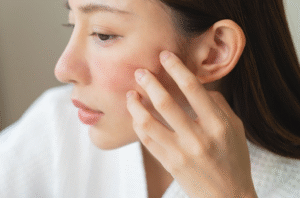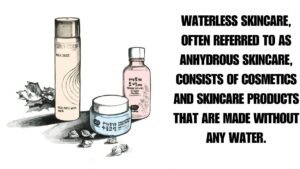Lip gloss contains whale sperm have you ever heard the myth? If so, this bizarre rumor has spread widely despite having no factual basis. Lip glosses and other cosmetics are meticulously formulated products, so it’s important to separate misunderstood folklore from the actual science of what goes into these formulas.
In this blog post, we’ll take a deep dive into busting common myths about lip gloss ingredients and their supposed links to whale byproducts. We’ll examine the rumor’s origins, review modern gloss recipes, and clarify the roles of historic marine items like spermaceti versus reality.
By the end, you’ll gain valuable insights into debunking questionable beauty claims and empowering yourself with facts about the cosmetics in your collection. Let’s get started breaking down the truth.
What is lip gloss made of, and where does it come from?
Lip gloss is a cosmetic product used to give lips a shiny appearance. It typically comes in a tube or pot packaging and is applied directly to the lips using an applicator.
Some of the main ingredients that make up traditional lip gloss include:
- Oils: Vegetable, coconut, and mineral oils are commonly used as they are moisturizing and add shine when applied.
- Waxes: Beeswax and candelilla wax are included to give the gloss a thicker texture that stays on the lips longer.
- Volatile oils: These fragrances like mint, vanilla, or fruit flavors are added for scent.
- Pigments: Mica and iron oxides provide lip-safe colorings in tinted glosses.
- Preservatives: Salt compounds prevent spoilage by inhibiting microbial growth.
Lip gloss is a blend of oils, waxes, colors/scents, and preservatives manufactured into a smooth, moisturizing product for the lips. None of its typical ingredients come from whales.
How is lip gloss made, and what are the ingredients used in the process?
Here’s a basic rundown of how lip gloss is produced:
- Ingredients preparation: Oils, waxes, colors, flavors, and preservatives are measured and melted down.
- Mixing: All the heated components are blended uniformly in a large vessel.
- Cooling: The combined mixture is cooled to a semi-solid texture.
- Packaging: The gloss is poured into tubes, pots, or other containers before fully solidifying.
- Quality testing: Samples undergo screening for consistency, shelf life, and safety.
- Labeling: Marketing info and ingredient lists are printed on the packaging.
- Distribution: Finished glosses are shipped to stores, online retailers, and consumers.
The ingredients used are oils (coconut, mineral), waxes (beeswax, candelilla), colors, scents, and preservatives designed for lip product formulations. Whale products play no role.
What are some of the benefits of using lip gloss on your lips?
Some key benefits of applying lip gloss include:
- Moisturization: The oils and waxes hydrate and protect dry lips.
- Shine: Gloss adds an appealing, high-gloss sheen to the natural lip color.
- Prevents chapping: The emollient formula forms a barrier on lips to prevent water loss.
- Confidence boost: Gloss enhances the fullness and vibrancy of one’s smile.
- Long-lasting: Properly applied gloss lasts longer on lips than regular lip balm.
- Flavor/scent: Enjoyable flavors and fragrances are pleasant to reapply throughout the day.
Lip gloss nourishes lips, improves their appearance, prevents cracking, and boosts confidence all without any controversial whale derivatives.
Are there any risks associated with using lip gloss?
While generally safe for regular use, a small subset of people may experience occasional mild sensitivities to some lip gloss ingredients:
- Fragrance allergies: A minority have reactions to synthetic scents added in gloss.
- Preservative irritation: Prolonged contact with preservatives can rarely lead to itching or flaking.
- Petroleum-based oils: Some individuals’ lips do not tolerate petrochemicals like mineral oil long-term.
- Metals: Rarely, certain people are sensitive to trace metal pigments used for tints.
However, the vast majority tolerate lip glosses well with no issues. As with any cosmetic, it’s best to patch-test a new product first if concerned about sensitivity. The overall risk is very low when using well-formulated, unexpired gloss as directed.
What should you do if you experience any adverse effects after applying it to your lips?
If unusual symptoms occur after using lip gloss, these steps can help:
- Discontinue the use of the specific gloss immediately.
- Wash lips well with a gentle cleanser to remove any residue.
- Apply plain lip balm or olive/coconut oil to soothe irritated skin.
- Watch for signs of allergic reaction like swelling or hives and seek care if severe.
- Note specific ingredients that may be the trigger.
- Switch to a hypoallergenic lip balm instead to avoid problematic additives.
- Consult an allergist if reactions persist to identify the exact irritant.
Most importantly, do not continue using a gloss that causes discomfort. Isolated incidents are usually not serious but identifying the culprit helps prevent future flare-ups.
Is lip gloss made out of whale sperm?
This is a myth without a factual basis. Whale sperm, also called spermaceti, has never been an ingredient used in mainstream lip gloss formulations. The rumor likely stems from misunderstanding spermaceti’s historic uses in candles and cosmetics before more modern substitutions.
However, it is simply not a component detected in any commercial glosses available today. Lip products are precisely engineered blends of skin-safe oils, waxes, colors, and additives – but whale sperm plays no role currently or historically.
Why do people think lip gloss contains whale sperm? What started the rumor?
The belief that lip gloss contains whale sperm can likely be traced back to past uses of spermaceti, the waxy substance found in the heads of sperm whales. In earlier centuries before more efficient alternatives:
- Spermaceti was harvested from whales and rendered into clear, hard wax used to make fine candles and cosmetic products like lip balms for its emollient properties.
- Over time, myths and urban legends exaggerated its role, fueling unsupported claims it was a key gloss ingredient or mistakenly conflating it with cheaper tallow or plant waxes that replaced it.
- The idea took hold even as spermaceti fell out of favor once petroleum and vegetable waxes provided cheaper, more sustainable alternatives by the 1900s.
So while historically accurate that spermaceti wax had niche uses centuries ago, modern lip gloss formulations contain absolutely no whale derivatives or byproducts due to misinterpretations of its historic applications. The rumor persists today despite zero factual scientific evidence.
Does lip gloss contain spermaceti? What is spermaceti?
Lip gloss does not contain spermaceti. Spermaceti is the waxy oil produced from the head cavities of sperm whales. Some key facts:
- Spermaceti is in a fluid state at warm temperatures but hardens to a white wax-like consistency when cooled.
- It was historically harvested from sperm whales and used to make fine candles, lubricants, and cosmetic products due to its emollient qualities before more cost-effective plant and mineral oil alternatives like jojoba oil.
- However, spermaceti fell out of commercial use by the early 1900s as the environmental impacts of whaling became apparent and petrochemical substitutes were discovered.
- While legitimate in its past maritime applications, spermaceti is no longer included in modern lip gloss or cosmetic formulations due to availability, cost, and ethical concerns over whaling byproducts.
Spermaceti was a historic marine resource but it does not factor into any standard lip gloss recipes of today. Its link to the products is purely etymological, not factual.
Does lip gloss contain ambergris?
Ambergris is not used in lip gloss either. Ambergris is a waxy, greyish substance that forms in the digestive system of sperm whales. Some key points:
- It was historically valued in perfume making for its sweet, musky odor and ability to fix fragrances, though now banned by CITES whaling protections.
- Ambergris forms very rarely, and is expelled or found floating in seawater—it is not deliberately harvested from live whales.
- Synthetic ambergris alternatives have replaced natural ambergris in the fragrance industry due to whale conservation concerns and variability in scented qualities between samples.
- No forms of ambergris—natural or synthetic—are components of modern lip gloss formulations, which rely on stable, predictable ingredients for consistent texture and pigmentation.
While ambergris served limited roles in perfumery in the past, it poses no factual relevance to present-day lip gloss design or manufacturing in any capacity.
What is the typical recipe for lip gloss production?
A standard modern lip gloss formula may contain:
Oil phase
- Coconut oil (15-25%)
- Jojoba oil (10-20%)
- Palm oil (5-15%)
Wax phase
- Beeswax (5-15%)
- Carnauba wax (2-8%)
- Candelilla wax (2-5%)
Humectants
- Glycerin (5-10%)
Emulsifiers
- Polysorbate 20 or 60 (1-3%)
Colors and dyes
- Mica, iron oxides, carmine (0.5-2%)
Preservatives
- Potassium sorbate (0.1-0.3%)
Flavor/Fragrance
- Natural flavors, essential oils (0.5-2%)
The exact measurements vary by brand, but this balanced recipe exemplifies how gloss is made by mixing oils, waxes, and additives all solely plant and mineral-derived, without any whale components involved.
Is lip balm made out of whale sperm?
No, lip balm is also not made using whale sperm or any marine mammal products. Like lip gloss, standard lip balm formulations contain vegetable and mineral ingredients such as:
- Petroleum jelly or coconut oil as the base
- Beeswax and cocoa butter for wax content
- Essential oils for fragrance and minor active ingredients
- Optional tints or flavors
Historically, some balms may have contained trace spermaceti wax before plant waxes replaced them. However, modern commercially produced lip balms, lip treatments, and other skin salves contain no whale sperm or byproducts only safe, sustainable ingredients designed for moisturizing benefits. Whale derivatives were never mainstream additives and play no role in present-day cosmetics.
Are lip plumpers made from whale sperm or whale vomit?
The ingredients in lip-plumping formulas also do not involve whale products. Lip plumpers temporarily enlarge lips through various rolling/pumping actions or mild irritants like caffeine, pepper extract, or menthol that cause vasodilation. Common active/soothing components may be:
- Hyaluronic acid or collagen peptides for volume
- Caffeine, ginger, and mint for circulation
- Coconut/soybean/sunflower oils for moisture
- Natural flavors, colors, preservatives
Though sometimes associated with collagen injections, reliable plumping balms are made from vegetable, herbal, and synthetic active ingredients not whale derivatives like sperm or vomit which have never been cosmetic components and present health/ethical issues. Whale products play no factual role.
Is perfume made out of whale sperm?
Modern perfume formulations do not contain whale sperm or any marine mammal components either. While spermaceti wax and ambergris were historically prized fixatives and odorants in fine perfumes:
- Most scents today rely on synthetic molecules that replicate desired natural oil essences like sandalwood or rose.
- Strict international protections since the 1970s have made exploiting live whales commercially unviable.
- Cruelty-free alternatives like jojoba or coconut esters effectively replace prior whale-derived ingredients.
Major perfume houses have long ceased using whale products for both ethical and practical reasons given viable plant and laboratory alternatives. No respected fragrance brands currently list sperm whale ingredients on labels due to conservation and manufacturing standards. Whale derivatives have been phased out of the industry for decades now.
Final Thoughts
While past whaling industries did make limited use of whale byproducts like spermaceti and ambergris, these substances have been definitively phased out of modern lip gloss, balm, and perfume formulations for decades due to sustainable alternatives. None of these formulas involve the exploitation of living whales or endanger their conservation in any way.
The belief that products contain whale sperm or vomit is nothing more than an unfounded internet myth, not grounded in the factual chemistry and careful standards of today’s beauty industry. By understanding the science behind cosmetic recipes and inspecting truthful ingredient lists, we can separate myths from reality and feel confident that the lip products we enjoy are strictly made from harmless, ethical ingredients designed for our care and beauty.











